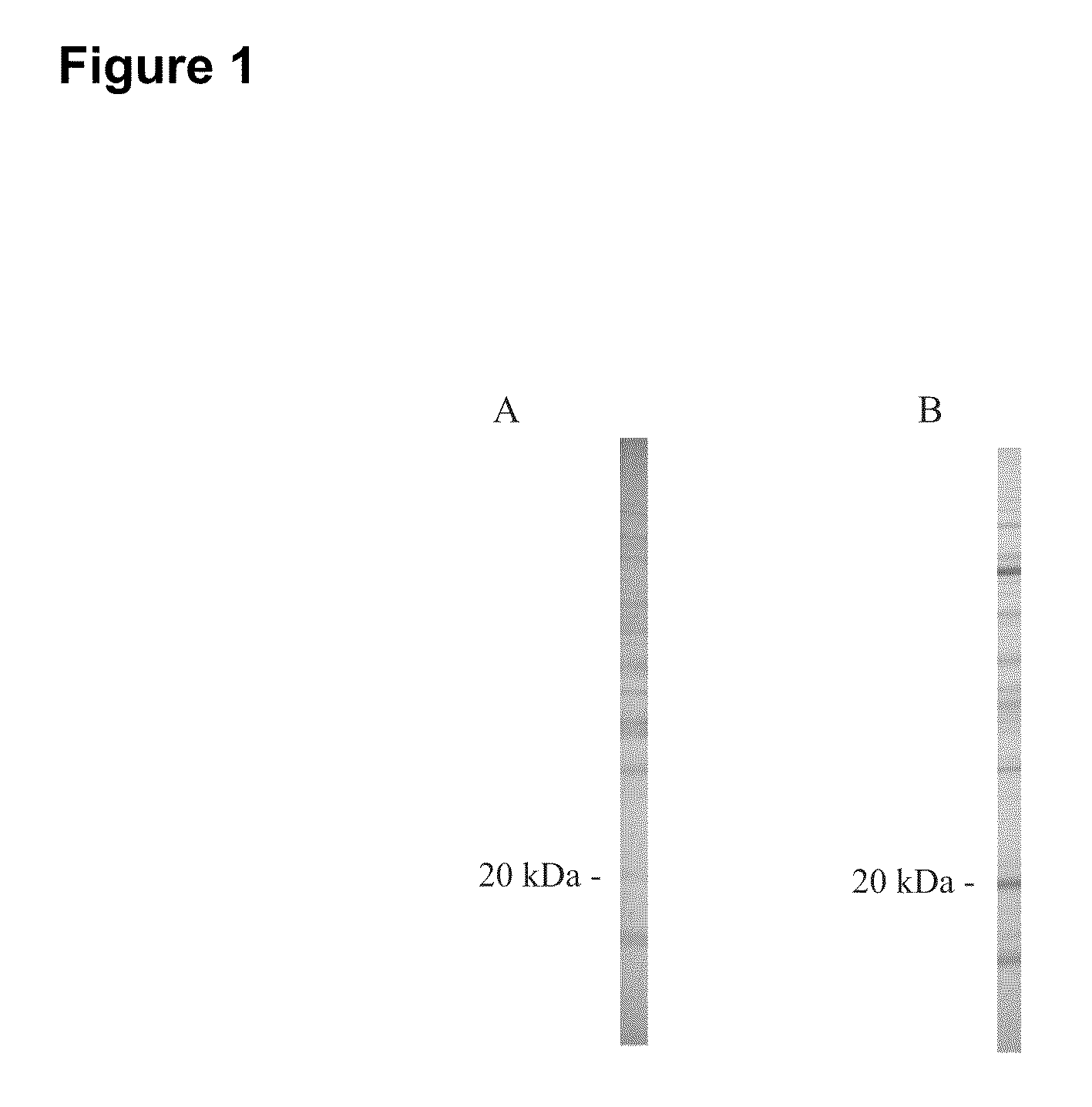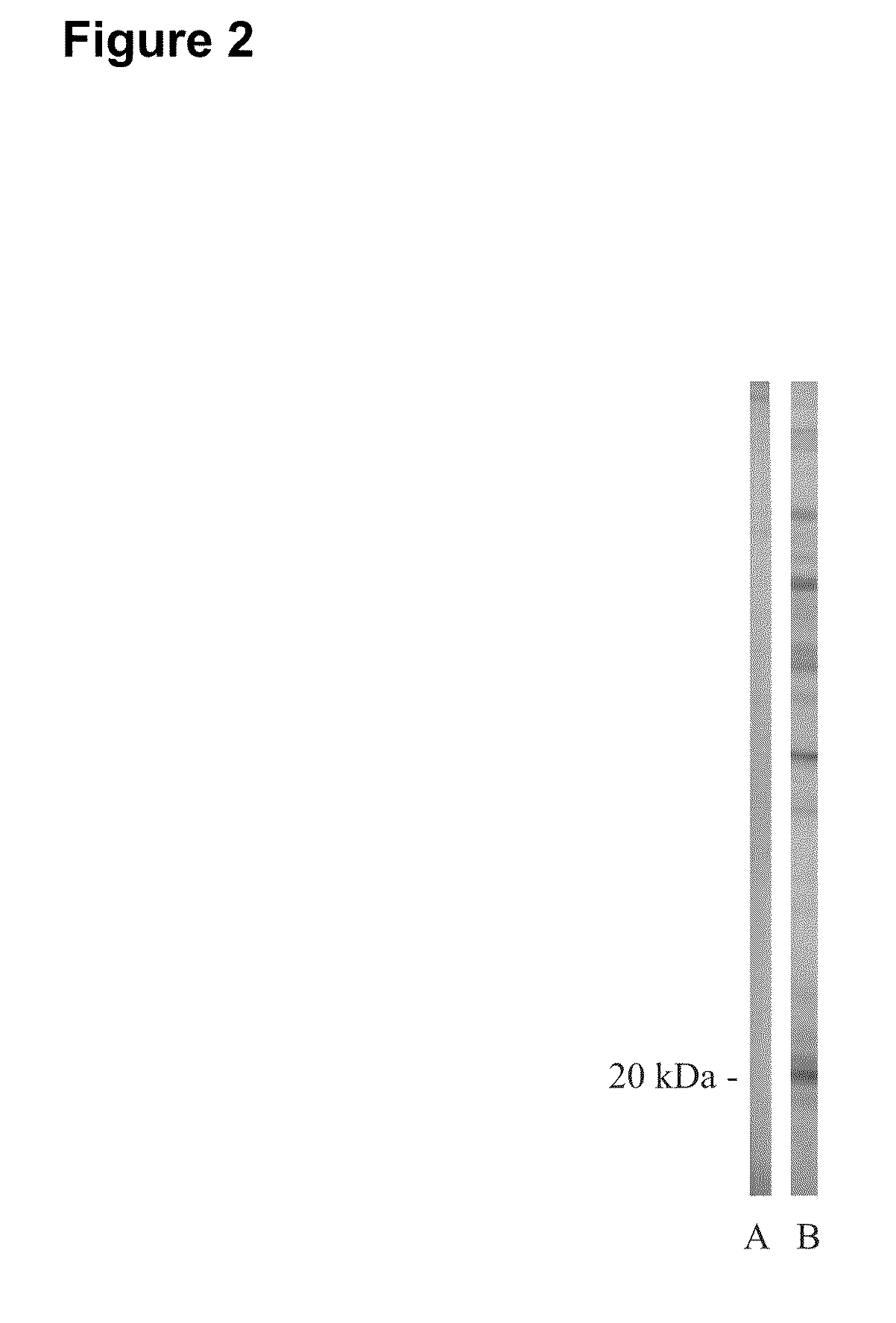Early detection of canine lyme disease by specific peptides and antibodies
a technology of applied in the field of early detection of canine lyme disease by specific peptides and antibodies, can solve the problems of insufficient study of the humoral immune response of canine lyme disease to date, inability to detect the response to c6 and other problems, to achieve the effect of improving the immune response of canine lyme disease, and reducing the risk of infection
- Summary
- Abstract
- Description
- Claims
- Application Information
AI Technical Summary
Benefits of technology
Problems solved by technology
Method used
Image
Examples
Embodiment Construction
[0010]The present invention satisfies an existing need in the art by providing methods and compositions (e.g., kits) which permit rapid and accurate detection of canine Lyme disease. In this regard, the present invention relates in one aspect to the early detection of infection of canines with B. burgdorferi. More specifically, as shown in the Exemplification section, which follows, methods of the present invention are capable of detection of B. burgdorferi infection in as little as one month after infection. In another aspect, the present invention relates to the detection of the presence or absence of B. burgdorferi infection even in dogs that have been vaccinated. In yet another aspect, the present invention provides a method for distinguishing animals infected with Borrelia from animals that have been vaccinated against (but not infected with) Borrelia. Further, the present invention relates to kits useful in connection with the methods disclosed herein.
[0011]In a currently pref...
PUM
| Property | Measurement | Unit |
|---|---|---|
| molecular weight | aaaaa | aaaaa |
| temperature | aaaaa | aaaaa |
| humidity | aaaaa | aaaaa |
Abstract
Description
Claims
Application Information
 Login to View More
Login to View More - R&D
- Intellectual Property
- Life Sciences
- Materials
- Tech Scout
- Unparalleled Data Quality
- Higher Quality Content
- 60% Fewer Hallucinations
Browse by: Latest US Patents, China's latest patents, Technical Efficacy Thesaurus, Application Domain, Technology Topic, Popular Technical Reports.
© 2025 PatSnap. All rights reserved.Legal|Privacy policy|Modern Slavery Act Transparency Statement|Sitemap|About US| Contact US: help@patsnap.com


